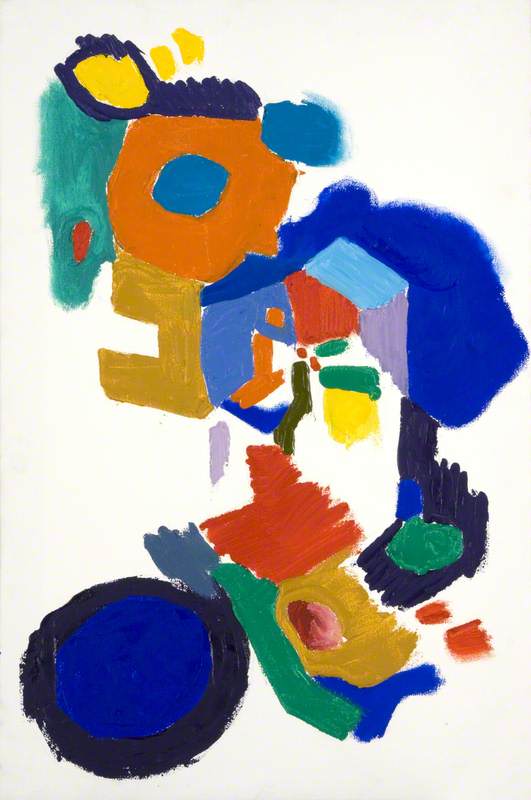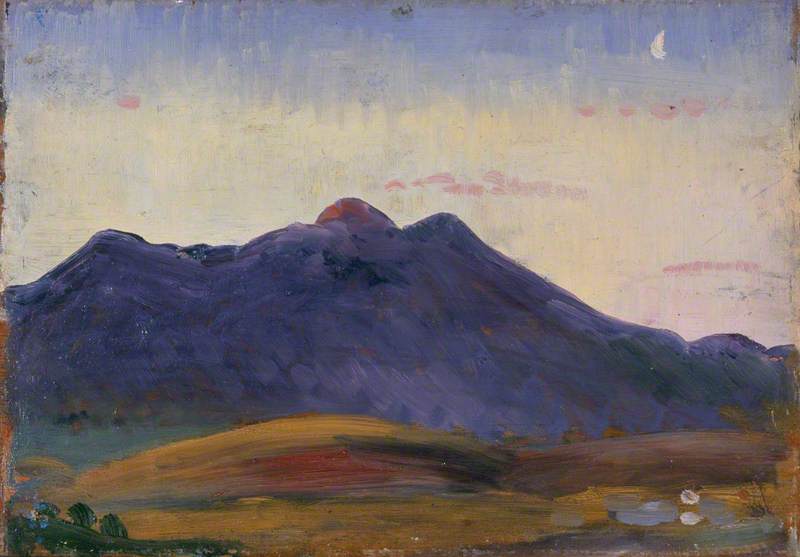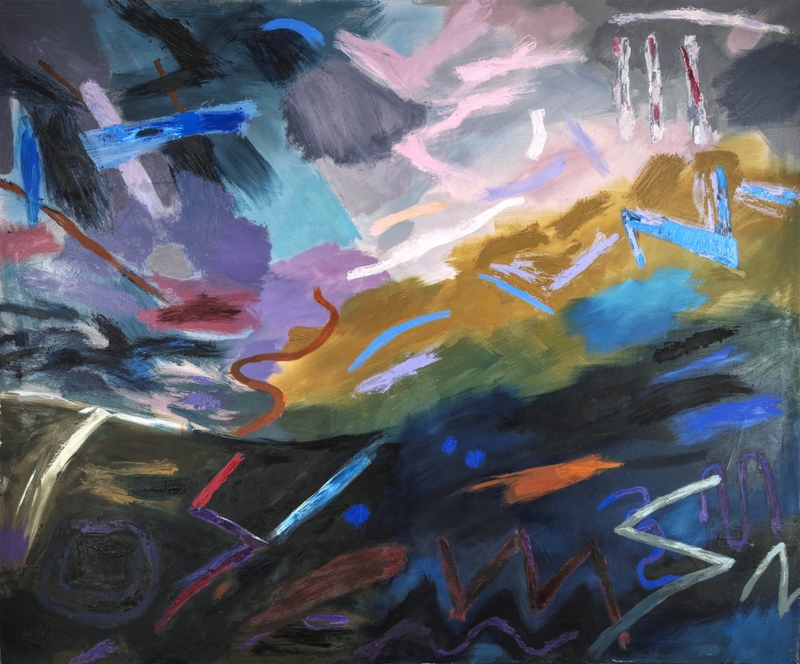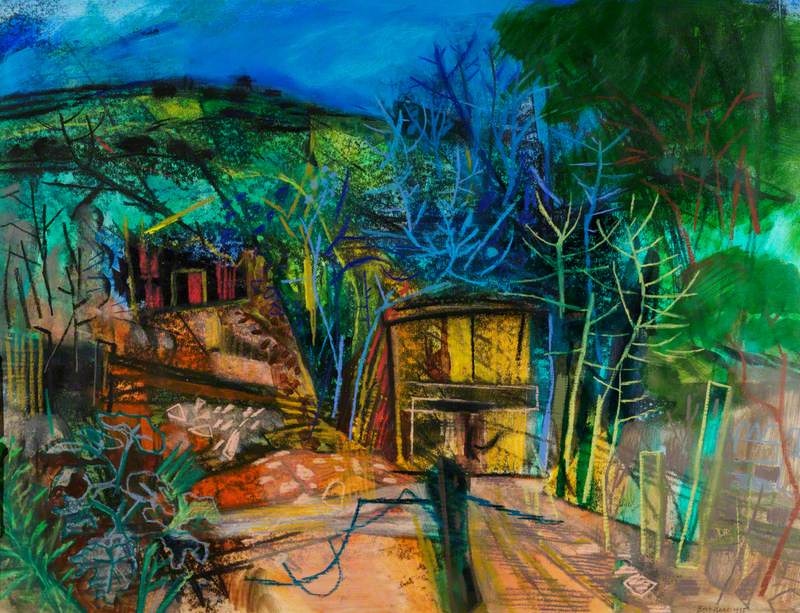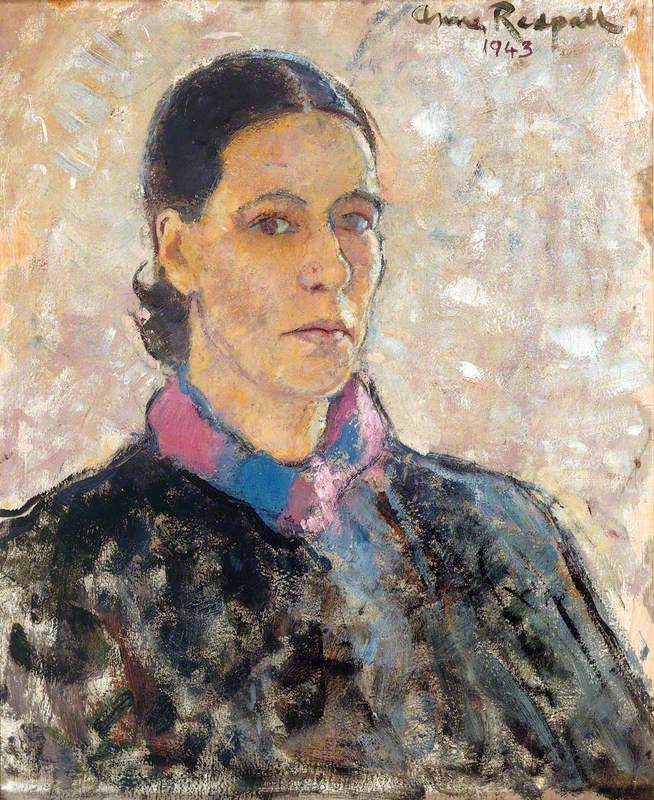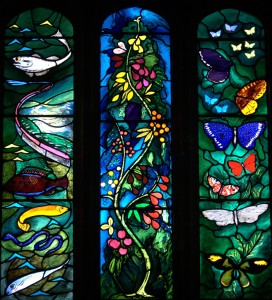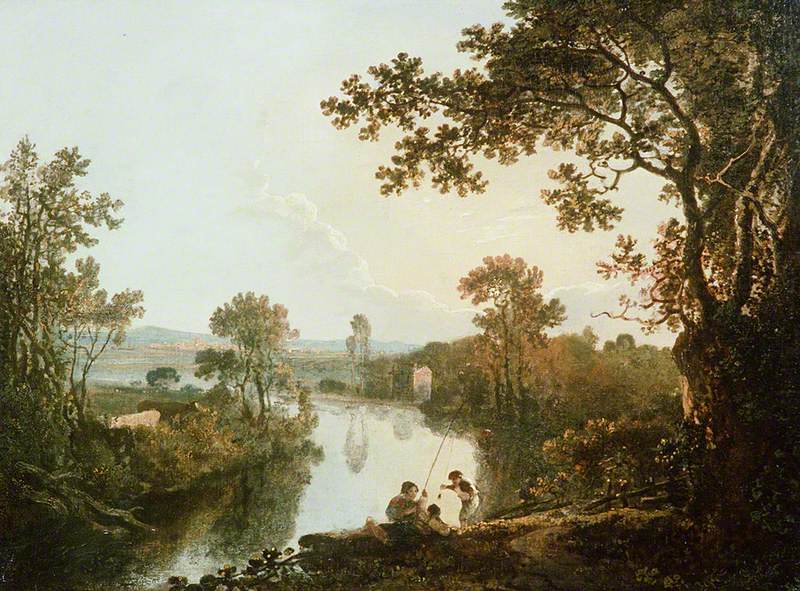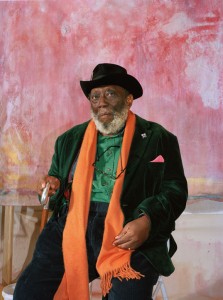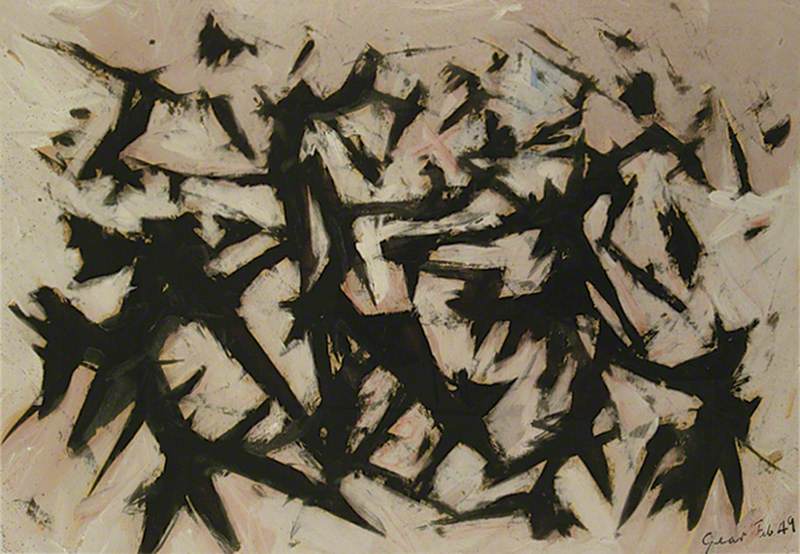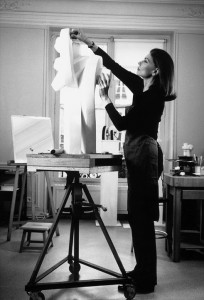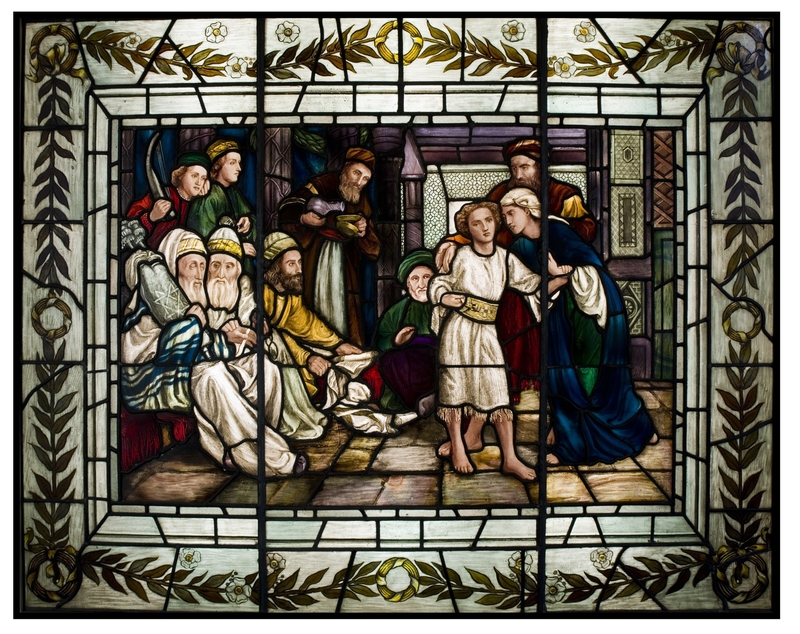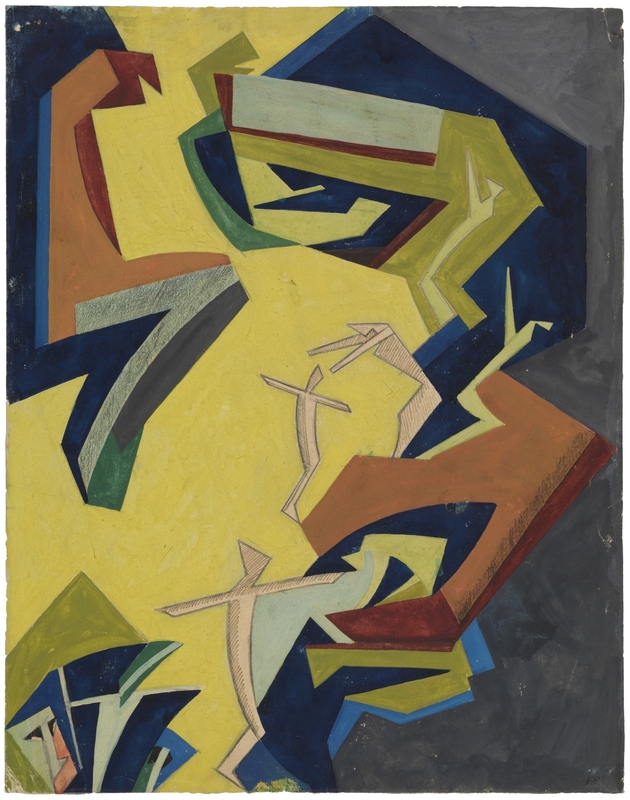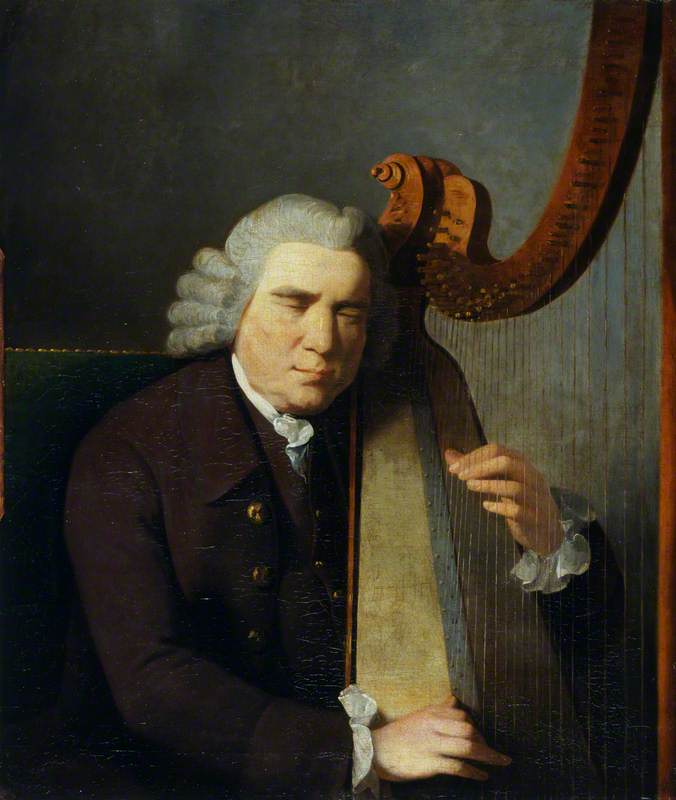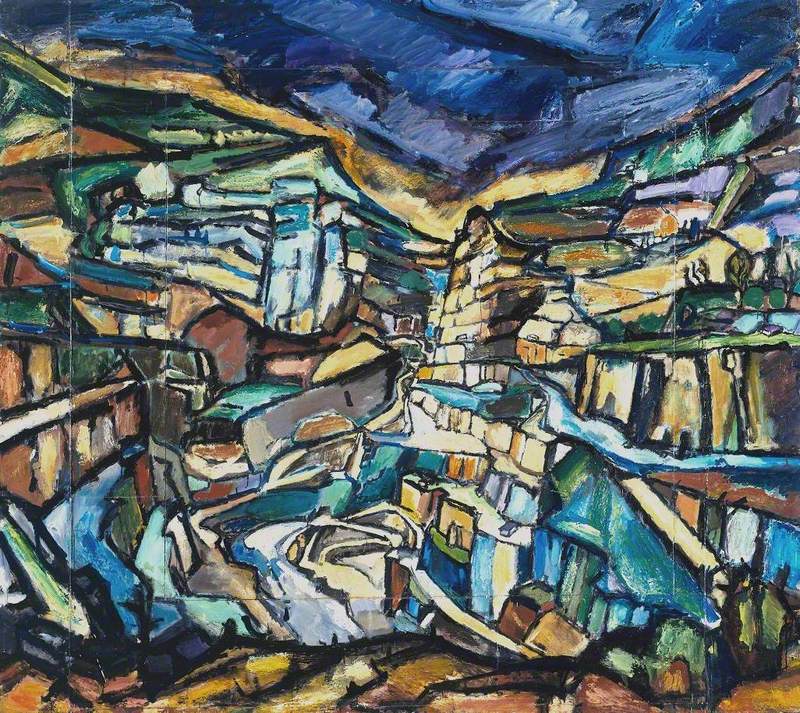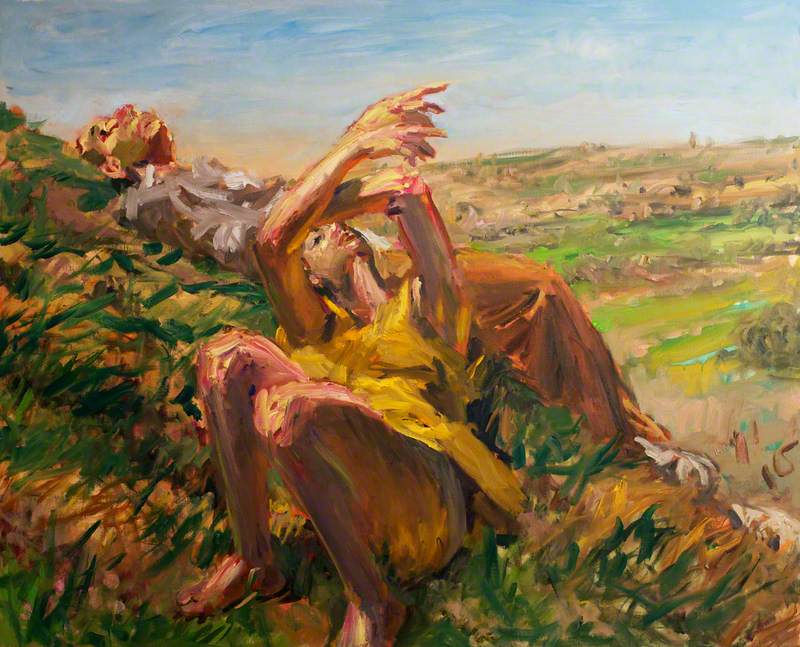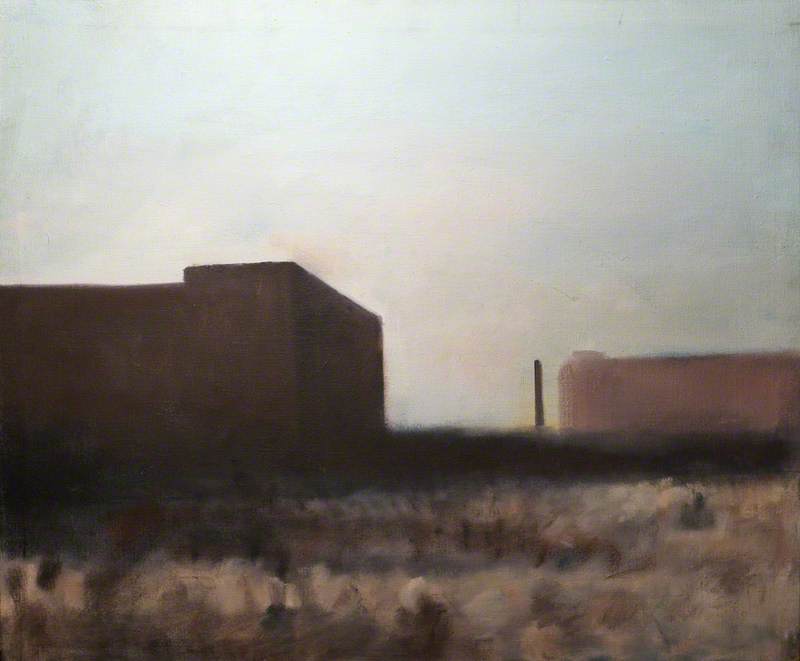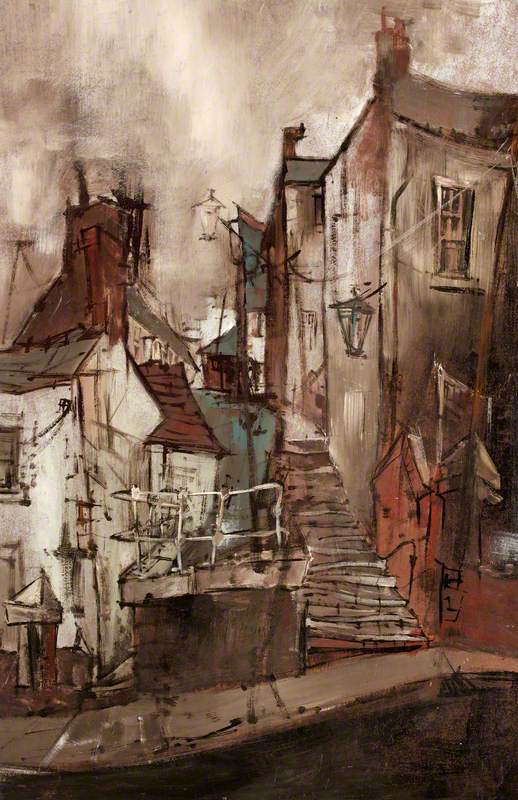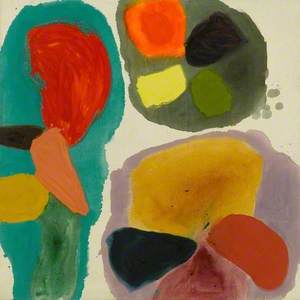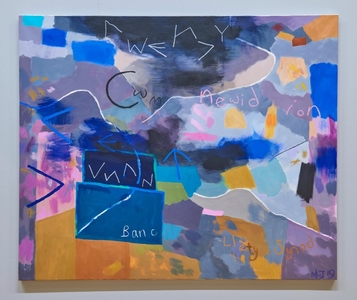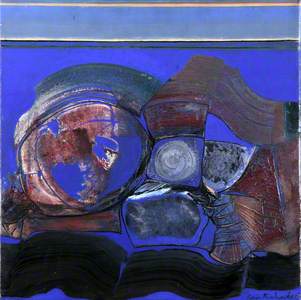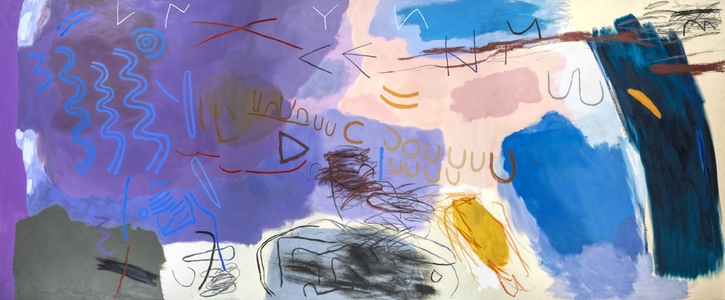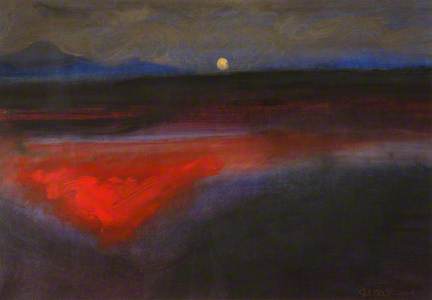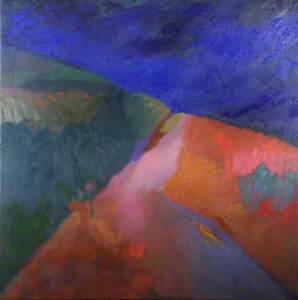'Through these stories I glimpsed an older world that was mysterious and irrational.' – Mary Lloyd Jones, The Colour of Saying.
The first thing you notice about the paintings of Glenys Cour, Mary Lloyd Jones and Gillian Ayres is the colour. Those blues! The dashes of red! All three deal with colour in such a beautiful, bold way, painting dreamlike abstractions that often hint at landscapes and other worlds. And then there are the textures – the velvety softness of Cour and Lloyd Jones, the thick, almost 3D globs of paint used by Ayres.
Of the same generation, Cour and Lloyd Jones were both born, raised and continue to live in Wales. Ayres, while born in London, spent a significant amount of time in Wales in the 1980s. All three taught in art colleges (Ayres was the first woman to ever run an art department in a British art school), and all three continued working into older age, committed to painting despite different trends that have come and gone in the art world.
As well as the parallels in their use of colour, texture, abstraction and connection to the land, there's also a sense of history, storytelling, language and a feeling of otherness, of being an outsider. This could partly stem from being women artists who have not been respected enough in their work. Could this otherness come from a sense of Welshness too? Mary Lloyd Jones said in Delweddau o'r Ymylon (Images from the Edges) 'at times I felt that I belonged to the wrong sex and was living in the wrong time and place to be a successful artist'.
Gillian Ayres' paintings are the more abstract of the three. They have a less obvious link to landscape but still a sense of place, as Ayres often painted shapes that seemed to reflect the natural world; Michael Glover described it as a 'kind of lyrical paganism.' From 1981 to 1987 Ayres lived in Llaniestyn on the Llŷn Peninsula although had regularly visited and spent time in north Wales before this too, enjoying the countryside, going on hikes and walking up Cader Idris – which she said she'd walked up about seventeen times!
'I got unhappy with teaching in art schools and just resigned one day, lost my London mortgage and cut out to Wales. I thought I'd paint like hell. I just didn't worry,' she said. The Welsh influence extends to some of her paintings' titles too – Cwm, Cwm Bran, Castell Odo – her time in Wales being one of the most prolific of her career.
This period in Wales changed the way she painted. She returned to using really thick paint and began mixing textures, using thinner paint alongside this impasto style. Anthony and Cleopatra was the first painting Ayres completed in Wales, which coincided with the 'big snow' of winter 1981/1982 resulting in Ayres getting snowed in. While painting she ran out of her usual ground of white lead and instead used a yellow ochre which you can see through the layers. The paint has a graffito style reminiscent of Mary Lloyd Jones' work.
Mary Lloyd Jones became fascinated with pre-history in Wales and the mark-making of Ogham and Bardic alphabets, which she likens to the scarring of the landscape from industry and mining. While we can see this similar sense of mark-making in Ayres' work, Lloyd Jones' paintings are different texturally, with a flatter, more liquid feel. Landscape is more obvious in her work. You can easily see the mountains and stormy skies, and she has talked about being influenced by patchwork quilts which can be seen in the little squares of paint placed on the surface of these mountainous shapes.
Mary Lloyd Jones was born in Devil's Bridge and still lives nearby. She has a deep connection to Wales, its language, culture, history and landscape, and manages to combine all of these things to create layered paintings that lightly touch on these different themes. The colours in her paintings are reminiscent of those by James Dickson Innes, the abstraction and shape-making similar to Ceri Richards.
Ponterwyd, Gaia from 1998 shows the literal landscape of Ponterwyd, with abstract patterns and mark-making overlaid. It has a windy, wintery wildness to it. These shapes become more pronounced in later works such as Bryn Celli Ddu, which at first looks purely abstract but on closer inspection has many identifiable aspects of the Bryn Celli Ddu burial site – the mound, the rock slabs, the passageway, the clearer representation of the bardic alphabet (Coelbren y Beirdd) and neolithic patterns. It feels like it brings all her themes together, even referencing previous work – like the blue patch on the right side of both paintings.
Bryn Celli Ddu
(triptych) 2005/2006
Mary Lloyd Jones (b.1934) 
Glenys Cour was born in Fishguard in 1924, and in early 2024 celebrated her 100th birthday with an exhibition of her work at Mission Gallery, Swansea. She was taught by Ceri Richards at Cardiff College of Art and went on to become a popular lecturer, teaching both painting and stained glass at Swansea College of Art. While Cour always worked with intense colours, years spent working with glass further influenced her experimentations with colour and light. Cour has experimented with different materials and subject matter over her career, and in her later work has focused more on landscapes.
'My windows look out over the expansive skies and tides of Swansea Bay. To the West, far away, the remnants of industrial heritage and to the East the harbour and Lighthouse. It's a marvellous view, the light changes all the time, there's always something new to see.'
These are landscapes that depict her local area, but they also have a mystical quality to them, the deep blues (Cour has talked about her love of blue!) and soft textures create a sense of drama – an otherworldliness. The format and shapes are simple, with a deft handling of perspective drawing the viewer in.
If it's the use of colour that first draws us into the work of these three artists, a whole world is revealed the closer we look. In an art world that hasn't given women artists their due, one in which they are still underrepresented in public collections, these three women have shown a continued commitment to their work and to painting specifically. With their strong connection to Wales, they have had a profound influence on many Welsh artists, in both their work and their teaching.
Siân Lile-Pastore, writer and art educator
This content was supported by Welsh Government funding
Further reading
Ceridwen Lloyd Morgan, Delweddau o'r Ymylon: Bywyd a gwaith Mary Lloyd Jones, Y Lolfa, 2002
Martin Gayford and David Cleaton-Roberts, Gillian Ayres, Art/Books, 2017
Mary Lloyd Jones, The Colour of Saying, edited by Eve Ropek, Gomer Press, 2001
Melissa Munro, Gillian Ayres in Wales: an untold story, National Museum Cardiff, 2017
Michael Glover, 'Obituary: Gillian Ayres: Abstract painter whose work was rooted in the beauty and colour of the real', The Independent, 2018
Glenys Cour in conversation with Peter Wakelin, 2017, CASW

